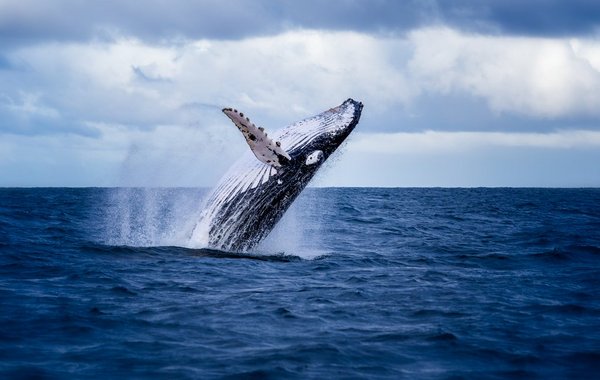 Read this article in French
Read this article in French- Share this article
- Subscribe to our newsletter
Treaty of the High Seas to protect the ocean
In early March 2023 global negotiations concluded on the landmark Treaty of the High Seas to protect the ocean, tackle environmental degradation, fight climate change and prevent biodiversity loss. “There is only one Ocean. Every State, every economic player, every community of people and every individual has a responsibility to conserve it and to use it sustainably,” the treaty states.
Areas beyond national jurisdiction cover nearly two-thirds of the world's ocean, comprising the high seas and the seabed beyond national jurisdiction. They contain marine resources and biodiversity and provide invaluable ecological, economic, social, cultural, scientific and food-security benefits to humanity. However, they are under mounting pressure from pollution (including noise), overexploitation, climate change and decreasing biodiversity.
The ‘Biodiversity Beyond National Jurisdiction' (BBNJ) treaty enters into force once 60 States have ratified. The European Union will work to ensure this happens rapidly and to help developing countries prepare for its implementation. To this end, the EU has pledged € 40 million as part of a Global Ocean Programme and has invited members of the High Ambition Coalition to do the same within their capabilities.
The new treaty will allow the establishment of large-scale marine protected areas on the high seas, which are also necessary to meet the global commitment of the Kunming-Montreal Global Biodiversity Agreement concluded last December to protect at least 30 per cent of the ocean by 2030.
For the first time, the treaty will also require assessing the impact of economic activities on high seas biodiversity. Developing countries are to be supported in their participation in and implementation of the new treaty by a strong capacity-building and marine technology transfer component, funded from a variety of public and private sources and by an equitable mechanism for sharing the potential benefits of marine genetic resources.
This Implementing Agreement is the third of its kind following specific agreements on seabed mining in 1994 and the management of straddling and highly migratory fish stocks in 1995.
(European Commission/ile)
Read more on the website of the European Commission





Add a comment
Be the First to Comment